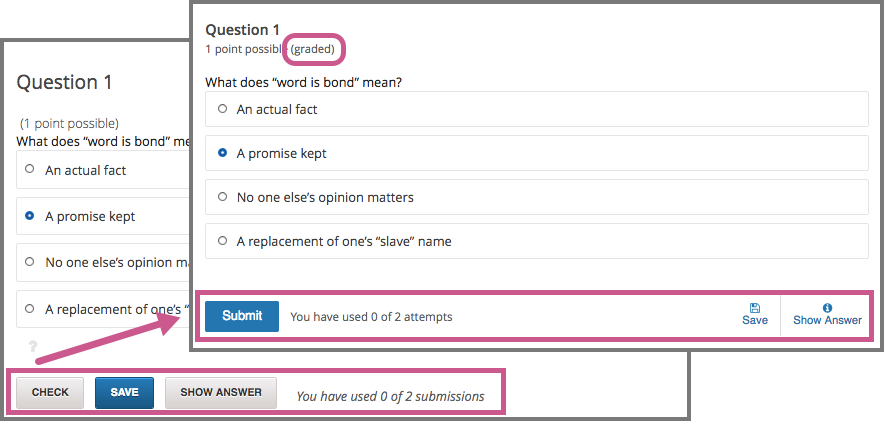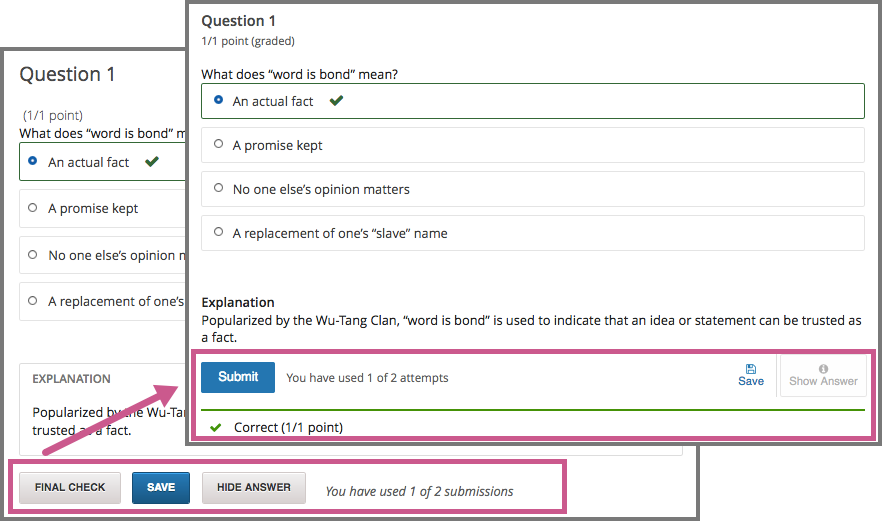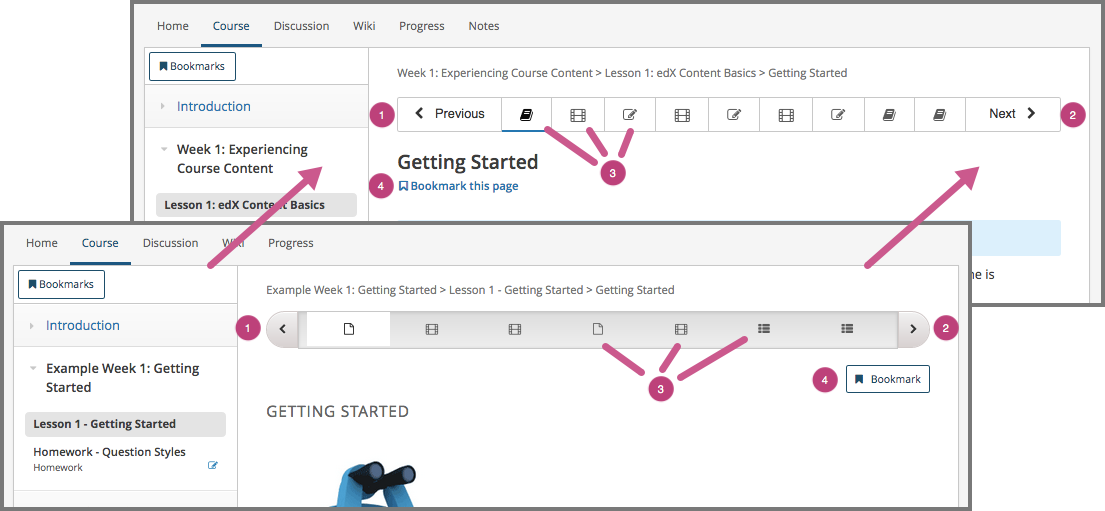Week of 10 October 2016¶
The following information summarizes what is new in the edX platform this week.
The edX engineering wiki Release Pages provide detailed information about every change made to the edx-platform GitHub repository. If you are interested in additional information about every change in a release, create a user account for the wiki and review the dated release pages.
LMS¶
Updated Options for Answering Problems¶
To improve the experience of learners when they answer problems, this release includes several changes to the user interface controls for core problem types. A summary of the changes follows.
- The Check and Final Check options have been consolidated and relabeled Submit.
- Options for secondary actions, including Save, Hint, Reset, and Show Answer, are separated from Submit through both different visual presentation and spatial separation.
- A message that identifies the problem as graded or ungraded appears under the problem’s display name.
- A banner now shows the correct or incorrect feedback message in addition to the green check mark or red X next to the answer. For learners who access the course with a screen reader or a keyboard only, this banner includes additional options for navigation within the problem.
The following image illustrates the changes in the appearance of a graded problem before you attempt an answer.

The following image shows the same problem after you submit the correct answer and select Show Answer.

For more information, see “Coming Soon: Enhancements for Standard Problem Types (partners)” on the edX partner portal, or “Coming Soon: Enhancements for Standard Problem Types (Open edX)” on the Open edX portal.
Other Changes¶
- In courses with proctored exams, learners who have not yet verified their identities, or whose identity verifications have expired, must now complete ID verification before they can open a proctored exam. (TNL-5083)
- For discussion posts, the preview window that shows rendered mathematical notation now displays each rendered line in the same order that the MathJax formatting was entered in the body of the post. (TNL-5451)
Studio¶
When you add a problem component to a unit by selecting Problem and then Advanced, the different versions of the drag and drop problem type are now more clearly labeled. To use the more recently added, fully supported problem type, you select Drag and Drop. To use the previous version, which is not accessible or usable on mobile devices, you select Drag and Drop (Deprecated Version). (SOL-1612)
For more information, see Drag and Drop Problem.
When you add a randomized content block to a course, the Scored field is no longer available as an editable setting for this component type. This field was never used, and did not have any effect on how the resulting problem was scored. Grading for randomized content block components, like all other components, is defined in the subsection. (TNL-4171)
For more information, see Randomized Content Blocks.
In a video component, an updated message appears if you select an additional language from the Transcript Languages list, but do not also upload the corresponding .srt file: “There is no transcript file associated with the {name} language.” (TNL-5200)
This release corrects an error that prevented annotation tool problems from being saved. The
target.srcvalue in the request is now correctly identified as a URL.

